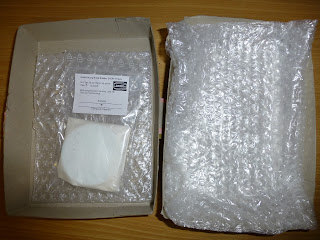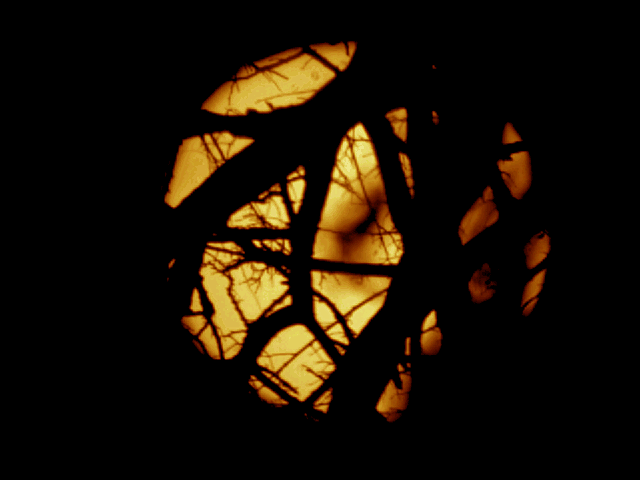Teleskop Service on their webpage describe simply as "prevents heat from entering the telescope" This describes perfectly what the filter does, but personally feel does not do it full justice. The following is taken directly from their website and gives further technical details about the filter.
The D-ERF filters by Baader are unique - and made in Germany! The filter glass is, in opposite to other makes, plane-parallel polished with a precision of 1/10 λ. The have an effective infrared reflective coating protecting the tube's internal parts from heat. Tube seeing is reduces and expensive filters near the focus are protrected from thermal stress. This is a prerequisite to use H-α narrow band filters.The Baader D-ERF main advantages:-- High quality plane-parallel polished substrate with a surface precision of 1/10 λ.
-- Dielectric interference layer coating system for IR reflection
-- Multi-layer anti-reflective coatings to prevent reflections
-- Stress-relieved substrate
Technical detail:
-- Diameter: 75mm
-- IR and UV reflecting
-- Dielectrical coatings
ERFs or Energy Rejection Filters like this are used in Hydrogen Alpha solar scopes to reject all but a narrow band of energy centred on the Ha line at 656.28nm, this can be seen in the graph above. If not rejected, the IR and UV light can damage delicate coatings in etalons and blocking filters, not to mention protecting our eyesight. Intially designed for the Solar Spectrum and Daystar rear mounted Hydrogen Alpha filters, these ERFs have found favour with amatuers doing Coronado PST mods - removing the etalon from a PST and incorporating this in a much larger refractor with suitable filtration - ie. a Baader D-ERF.
I have purchased several items from Teleskop Service in the past and have never ceased to be impressed with their level of service and communication, and their dealings with them in this instance lived up to my expectations. The filter was shipped by UPS and arrived in a small shoe box sized cardboard box.
Upon opening this I found wrapped in copious amounts of bubble wrap another smaller and flatter cardboard box. Within this was more bubble wrap, and inside this a bubble wrap bag that contained a small jiffy bag, which, within this was the ERF which was wrapped in a tissue paper. I have to say I am completely impressed with the care and attention that Teleskop Service have gone to with their packaging, and short of the box being run over by a truck it is highly unlikely that any damage to it's contents are ever likely to occur. Very impressive!
 For the amatuer telescope maker there always remains the option of using a black marker pen or a black lens edging pen to achieve the desired result. To my eyes the filter has a curious orangey red hue to it, which I think the camera does a half decent job of showing. It can also be seen on the unblackened edges that the filter has the same 'code number' written on in pencil, as well as a single small arrow indicating which face of the filter should point towards the sun, and hence then the other face which must point towards the telescopes objective lens.
For the amatuer telescope maker there always remains the option of using a black marker pen or a black lens edging pen to achieve the desired result. To my eyes the filter has a curious orangey red hue to it, which I think the camera does a half decent job of showing. It can also be seen on the unblackened edges that the filter has the same 'code number' written on in pencil, as well as a single small arrow indicating which face of the filter should point towards the sun, and hence then the other face which must point towards the telescopes objective lens. Not that I had any reason to doubt or disbelieve Baaders quoated specification, but I decided to measure the filter. It came in as 6mm thick and 75mm in diamter. This will need to be factored in for any filter cell that is manufactured to hold it, meaning that the maximum usuable aperture from this filter is a sensible 70mm, 72mm at an absolute push. Teleskop Service offer a heavy duty aluminium custom cell to hold this filter, and other glass solar filters, which at the time of this review retails at 145Euros for the 75mm filter.
Not that I had any reason to doubt or disbelieve Baaders quoated specification, but I decided to measure the filter. It came in as 6mm thick and 75mm in diamter. This will need to be factored in for any filter cell that is manufactured to hold it, meaning that the maximum usuable aperture from this filter is a sensible 70mm, 72mm at an absolute push. Teleskop Service offer a heavy duty aluminium custom cell to hold this filter, and other glass solar filters, which at the time of this review retails at 145Euros for the 75mm filter.  This is custom machined to the size of your OTA and also the size of your filter, and is felt lined to prevent scratching to the tube and also features large thumbscrews for ease of fixing. Teleskop Service will also fit your filter to the cell if the cell and filter are both ordered simultaneouslly. Ofcourse this is not the only option for a filter cell, and searching the web there are several imaginative solutions using easily obtainable materials and 'household items' that can be adapted into a perfectly good and usuable cell.
This is custom machined to the size of your OTA and also the size of your filter, and is felt lined to prevent scratching to the tube and also features large thumbscrews for ease of fixing. Teleskop Service will also fit your filter to the cell if the cell and filter are both ordered simultaneouslly. Ofcourse this is not the only option for a filter cell, and searching the web there are several imaginative solutions using easily obtainable materials and 'household items' that can be adapted into a perfectly good and usuable cell. The picture opposite shows well how reflective the coatings on the Baader D-ERF are, and also highlights the importance of tilting it (or any ERF) with respect to the normal of the optical axis of the system being used. If the ERF is not tilted, then both visually and photographically a series of overlapping disks of the sun will be see, aswell as being visually intrusive, where these overlap on the solar disk or limb there is a loss of contrast.
The picture opposite shows well how reflective the coatings on the Baader D-ERF are, and also highlights the importance of tilting it (or any ERF) with respect to the normal of the optical axis of the system being used. If the ERF is not tilted, then both visually and photographically a series of overlapping disks of the sun will be see, aswell as being visually intrusive, where these overlap on the solar disk or limb there is a loss of contrast. 










